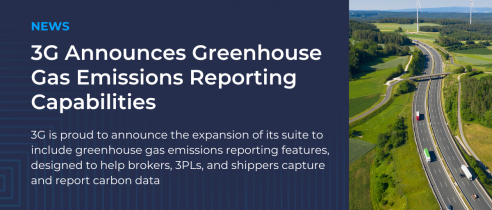Blog
Outperform Your Competitors by Anticipating Your Customers’ Next Shipping Needs

When customers’ expectations change, typically it is due to changes they themselves are reacting to. An evolution fomenting within their own customer base, their entire industry, or a closely linked industry will inevitably result in changes to their needs. Several pieces of software, such as an ERP and shipping software, can prove to be stabilizing forces in the face of such constant change.
The nature of the changing expectations will determine just how ready vendors are to meet the new demands and how they can differentiate themselves in the process. In particular:
- Product lineup – the relative demand for each product sold
- Consumption patterns – how and where goods are delivered
- Buyer priorities – faster vs. cheaper
The nature and timing of these changes are anything but predictable until they’re already unfolding. However, it goes without saying that they will happen at some point, so be prepared. Preparation, in this case, is not about getting ready for one specific scenario, but instead being able to respond to new scenarios as quickly (and nimbly) as possible.
Products. The product supply chain – purchase orders, inventory levels, demand forecasting – is why you have an ERP. However, the ERP may not be the best at managing the movement of those products, whether transporting them to distributors’ warehouses, retailers’ stockrooms, or consumers’ doorsteps. A product’s physical attributes, such as its size, weight, fragility, or value, all contribute to figuring out the best way to move it. As relative demand shifts, it could have a profound effect on shipping – such as a sudden need for freight options, or special handling, at scale. The learning curve, and execution, will be most manageable when there is a system in place able to shift between modes, carriers, and services with ease.
Consumption. Merchants are selling, and customers are acquiring, goods differently than they did a few short years ago. This has not only impacted how orders are accepted and managed, but how they’re fulfilled. The relative popularity of e-commerce means that retailers are now shipping out of distribution facilities, rather than stocking store shelves. Some retailers may act largely as an intermediary, selling products which are then drop shipped by manufacturers or distributors. These changes will have a domino effect and precipitate changes in shipping operations – like moves to self-managed freight or strict retail compliance requirements – the permanence of which is sometimes difficult to gauge. What matters is how systems are pre-configured to adapt (and adapt back, if needed).
Priorities. Certain items will always be in demand, regardless of economic conditions. However, buyers’ sensitivity to price and speed will fluctuate based on the broader landscape. Sometimes it’s “we need it yesterday, regardless of cost,” while other times “we can’t saccrifice one additional cent of margin” is the prevailing sentiment. That’s what makes the ability to rate shop across carriers, modes, and services so important. If prioritization of cost and speed fluctuate, so too will the “best” method of shipping. This change will be best absorbed by those who need not change a single workflow, but only alter what option they choose within each shipment.
3G extends that with a Transportation Management and Shipping Software suite that picks up where an ERP’s capabilities tend to taper off. Once the movement of goods begins, this type of software is vital, but even more vital is its ability to integrate with the ERP to act almost as a single solution. That combination will make any manufacturer, distributor, or retailer a greater source of certainty, and partner, for its own customers.
Trying to figure out what your customers will want you to do next, and what that might do to your shipping operations? Connect with us. Be ready for anything, whether or not you can see it coming.







